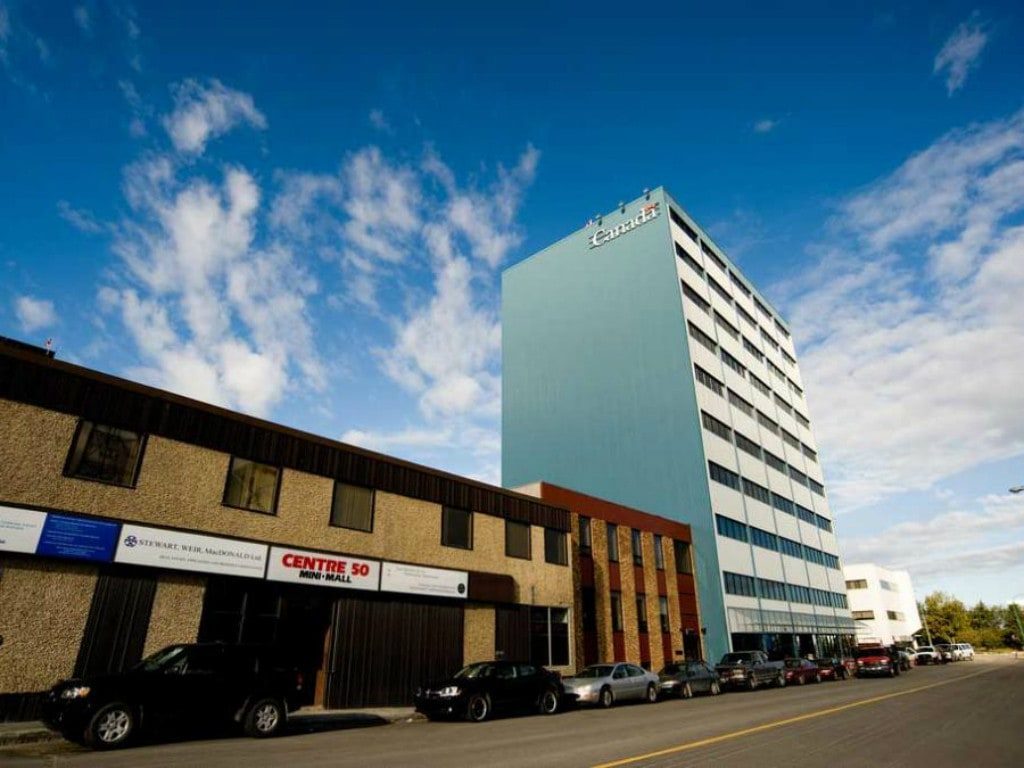In 1859, discovery of the Drake Well near Titusville, Pennsylvania, sparked the first oil boom in the United States. The find encouraged a rush of speculators and businessmen to the area, including a 19-year old man named John D. Rockefeller.
Rockefeller’s insight was that refining, not drilling, held the promise of steady money. Within a few years of setting up a refinery in Cleveland he was one of the biggest refiners in the world. He obsessively drove down costs, cut deals with the railroads and bought out all competitors, until he became the world’s first billionaire.
In 1911, Standard Oil controlled 70 percent of the refined oil market in the U.S., and the American government finally invoked the Sherman Antitrust Act — the law that protects consumers by ensuring the market has enough supply competition. Standard Oil was broken into 34 different companies.
In Yellowknife, we see the law of supply and demand in action all the time. As wages rise or people move here, real estate prices go up. On the other side of the equation, when new houses come online, prices drop.
Most real estate reporting deals with the demand side of the market. What will be the effect of the Snap Lake Mine closure? How can prices go up when the population of Yellowknife isn’t growing?
Demand does play a part, but the big driver of housing costs is supply. This is because, in the short run, supply is fixed. Building a house can take years, while a new family can be added to Yellowknife by a two-hour flight from Edmonton. Yellowknife has a small pool of large landlords, and it is instructive to speculate about how our real estate market stacks up in its supply competition, using the methods of the US Department of Justice.
In modern times, the Antitrust Division of the US Department of Justice uses the Herfidahl-Hirschman Index (HHI) to determine whether an industry qualifies as a monopoly. The HHI ranges between 0 and 10,000, calculated by totaling the square of each firm’s market share. As the HHI increases towards 10,000, the market is less and less competitive. Unconcentrated Markets have a HHI below 1500, Moderately Concentrated Markets score between 1500 and 2500 and Highly Concentrated Markets — the ones that put consumers at risk — break the 2500 mark. Here in the Yellowknife residential rental market, we’re sitting at 4,800. By comparison, when John Rockefeller’s Standard Oil controlled an estimated 70 percent of the oil refining market, it had an HHI of 4,900.
YK’s Residential Market
As of April 2015, there are a total of 1,630 private apartment units for rent in Yellowknife. Our biggest landlord, Northern Properties, owns 1,070 — 65.6 percent of the market. Midwest Property Management, Yellowknife’s second largest private landlord, has about 230 residential units in Yellowknife — 14.1 percent of the market.
In Highly Concentrated Markets, any purchase that involves an increase in the HHI of between 100 points and 200 points raises significant competitive concerns, and warrants scrutiny. So if Northern Properties were to purchase an additional 50 units (as it did on November 1st, 2010 when it bought Three Lakes Village from Lanesborough REIT), the market HHI would increase by about 340 points — almost three and a half times greater than the trigger point for a review.
If natural reaction to monopolies is the increase of supply, one might ask why that isn’t that happening in the residential rental market. Surely the rental rate bonanza should attract all kinds of new landlords to offer more units?
Ideally, Yellowknife would have about seven major landlords, ranging in market size between 9 percent and 24 percent of the market. This would keep the HHI of Yellowknife’s rental market in the range of 1,000.
The Power of a Commercial Rental Market Monopoly
Monopoly power can be tackled, as the GNWT showed last year, making a startling example of the downtown office market.
About one million square feet of leasable space is currently available in downtown, government-grade buildings. Last year, prior to the new GNWT office building opening, the downtown office market HHI sat at 2,685. Unsurprisingly, when it came time for lease renewal in various offices, the major landlords were unwilling to adjust their rates downwards — even in a situation where an entire building was empty (Bellanca, with 52,000 square feet).
So the GNWT did what regular people can’t — they added 7.1 percent more office space to the market, reducing the market HHI by almost 150 points to 2,537 — which would still be categorized as highly concentrated.
Dream Office (previously known as Dundee and Bellanca) own the largest share of the higher-end downtown office market with 39.1 percent, and Northern Properties REIT is our second biggest downtown landlord with 24.3 percent.
If natural reaction to monopolies is the increase of supply, one might ask why that isn’t that happening in the residential rental market. Surely the rental rate bonanza should attract all kinds of new landlords to offer more units?
The answer lies in construction costs. In Part Three, we will look at the role City Hall can play in the cost of living.
Read Part Three, Why Construction Here Is So Expensive.
This Article Is Part of a Series
Previous: NWT’s Economic Realities: Why Life Here Is So Expensive
Next: NWT’s Economic Realities, Pt 3: Why Construction Here Is So Expensive






